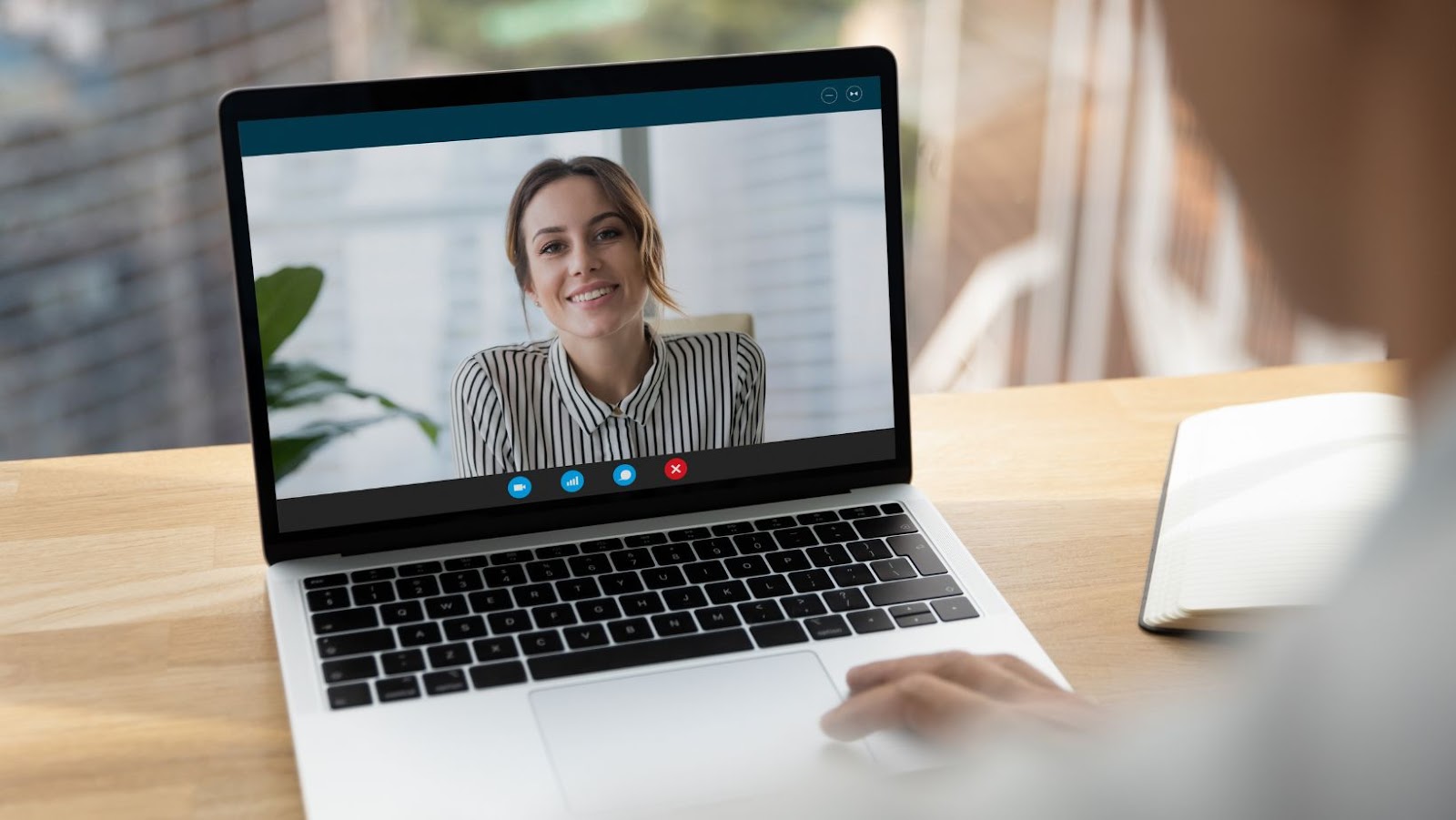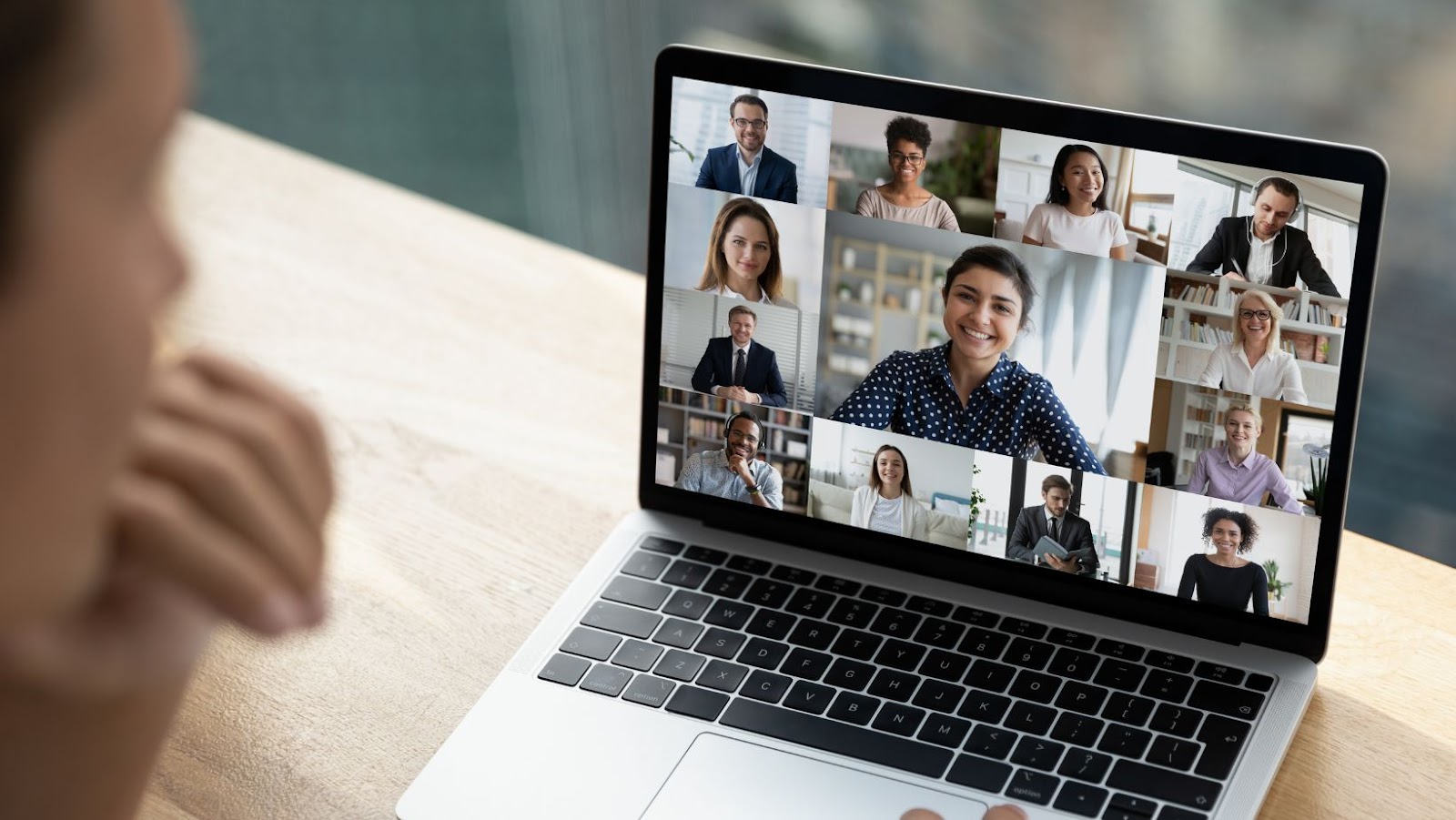How can Zoom Events be Used to Re-Create the In-Person Conference Experience?

Event organisers have been utilising video conferencing technology and virtual event platforms to host large-scale events in response to the global pandemic strain. Zoom is one of the most popular options for running these events. With its easy-to-use platform, Zoom provides a foundation for creating an engaging, interactive online meeting experience that closely mimics an in-person conference.
By leveraging certain features built into Zoom, such as breakout rooms, virtual waiting areas and lobby queues, it is possible to create a highly engaging event that will keep your attendees engaged and connected. Additionally, Zoom’s ability to provide breakout discussion areas allows attendees to participate in direct conversations as they would during an in-person session. And with additional tools like annotation boards, real-time polling and chat boxes, you can further enhance the overall experience.
In this guide we will discuss how you can utilise key features within Zoom to recreate an immersive in-person conference experience for your attendees and make your event feel more genuine –– all from the comfort of their own homes or places of work.
Zoom Events will try to re-create the in-person conference experience
With the rise of remote working, conference organisers must rethink how they can re-create the in-person experience while utilising the Zoom platform. Zoom Events offer organisers many impressive features, allowing them to host virtual conferences with the same level of engagement as an in-person event.
In this section, we’ll delve into the benefits of Zoom Events and how they can be used to replicate the in-person conference experience.
Cost Savings
Organising a physical conference is not only costly, but also opens up the risk of unanticipated expenditures. With Zoom events, many of these costs can be avoided.
For example, costs related to venue booking, travel and accommodation can be quite hefty; in contrast, Zoom events require none as attendees and hosts join virtually. Additionally, as no filming or sound crew are required and no printed material needs to be prepared or sent out in advance, invoices related to production services are not incurred with virtual conferencing.
Overall, the cost savings associated with Zoom events are considerable compared to their physical counterparts.
Increased Accessibility
Zoom events offer impressive accessibility when compared to physical conferences. By attending an event virtually, people can join from any location with an internet connection. This can potentially expand the reach of the conference by allowing people from around the world to attend. Additionally, many event organisers have found that having their event in a digital setting allows them to create a larger network of speakers and engage with more participants than if held in person. Even if organisers follow a similar format for their virtual events as physical ones, having it online opens up opportunities for panel discussions, one-on-one time with speakers; appealing visuals for presentations; and immersive experiences such as virtual tours and showrooms.
Allowing participants to join via web conferencing also eliminates challenges faced by having an in-person conference such as cost of travel and accommodation often prohibitive for many attendees. It also provides accessibility features such as closed captioning or sign language interpretation, which usually depend heavily on the commitment of staff and volunteers at venues. However, it can easily be incorporated into virtual events without extra onsite resources. Moreover, those who require audio or visual assistance can access recordings after they’ve attended which they wouldn’t be able to do at traditional events. Many Zoom conferences also open up opportunities for networking and private conversations between members through messaging functions or breakout rooms setup by administrators during the event which were impractical in-person settings before COVID-19 became widespread.
Improved Networking Opportunities
One of the greatest benefits of hosting a Zoom event is that it allows for improved networking opportunities. By implementing a virtual event platform like Zoom, you can bring together attendees worldwide, allowing them to connect and collaborate.
You can also create break-out rooms that allow certain participants to work together on tasks or discuss topics related to the event. Participants can also share documents in real-time and join small group discussions without being physically present in the same room.
Through this type of shared collaboration, events hosted over Zoom can promote relationship development between attendees, which can have lasting effects even after the event has ended.
Challenges of Replicating the In-Person Conference Experience
Even with all of the technological advancements, replicating an in-person conference experience can be difficult. The key is to be able to replicate the engagement, socialisation, and immersive experiences that one would typically experience at a physical conference.

Zoom events provide the opportunity to try and re-create this experience, but come with its unique challenges. Let’s look into what these challenges are in detail.
Lack of Social Interaction
One of the primary challenges of replicating an in-person conference experience using Zoom is a lack of social interaction. In-person events and conferences are designed to provide opportunities for delegates, guests and speakers to network, build relationships and share experiences. These more intimate gatherings, discussions, parties and conversations can help create meaningful memories that attendees associate with the event and encourage further participation in future activities.
Despite the powerful features Zoom provides, there is no replacement for being able to experience something physical which can add an element of enjoyment not attainable by any virtual event. For example, attendees do not get to enjoy activities such as shaking hands or visiting sponsor stands which allow for customer engagement. In addition, without physical interactions between participants it can be very difficult for them to feel connected or have meaningful conversations with each other at social events. Moreover, there is no guarantee that those connecting on Zoom will even pay attention during a session or engage with one another in an online chatroom due to privacy settings or other distractions like email notifications.
Additionally, Zoom does not have any control over its users’ environments; even though participants may be joining from their homes or offices they could still have unrelated tasks taking up their attention on their computer screens (like checking emails). This could mean that the host’s main focus has shifted from providing insightful content during a talk to ensuring that all participants remain engaged throughout the session – something that would never need to be considered at an in-person gathering where interaction is present everywhere around you!
Technical Difficulties
One of the most common challenges of conducting a digital conference is technical difficulties. Many users report lagging video, audio quality problems, disrupted images, and more. These technical issues can quickly ruin an event, so it is important to anticipate potential problems before the big day.
Zoom offers several tools to ensure optimal performance for events. To minimise lagging or buffering issues for attendees, IT professionals should set up a stable connection. This includes Boosting Video Performance using Zoom’s Pool Lesson feature and minimising Travel Time on the network. Beyond optimising video settings, conference planners should ensure enough bandwidth to accommodate all joined participants. Additionally, they should consider turning off high bandwidth applications on other devices connected to the same WIFI connection as this may interfere with Zoom’s performance during events.

It is also important to make sure all participants be aware of essential troubleshooting steps such as closing applications in their device before joining a meeting for best performance or check if their network meets Zoom’s requirements for user connections by running a Connection Test in their system information before starting any event or meeting to maximise smoothness during your session. Finally, you should plan with enough reserve time ahead of scheduled start times in case you experience difficulties getting everything set up correctly before your start time – allowing extra minutes will help avoid major disruptions once you go live!
Difficulty Engaging Participants
While virtual events offer flexibility, convenience and cost-effective solutions for large groups of remote workers to connect and collaborate, re-creating the energy of an in-person conference can be challenging. Virtual conferences come up short when it comes to engaging participants with the same level of enthusiasm as an in-person event.
Although technology has improved significantly in recent years, creating a truly engaging experience replicating the back-and-forth interactions that drive in-person engagement is still difficult. Many attendees at virtual events report feeling like passive observers instead of actively participating in discussions. Human connections are harder to replicate online than when we are sharing physical space–it can be tricky to make sure everyone feels heard when there are so many competing conversations happening at once—not to mention inevitable technical difficulties or connectivity issues. It can be difficult to maintain focus and attention during lengthy video conferences; no matter how interesting the content may be, fatigue will eventually set in if people do not have enough breaks and opportunities to interact with one another.
Hosts must take special care when curating their Zoom events by actively involving each participant whenever possible and strategically scheduling breaks throughout long podcasts or presentations. Making sure everyone who joins a call has a chance to contribute will help keep momentum going while also ensuring all perspectives are considered. In addition, this will encourage participation from more reluctant attendees by bringing them into the conversation since it would not feel like all attendee input is coming from only a few key voices on the call. With thoughtfully considered tactics such as these, even online events may bring energy that’s on par with an in-person conference thanks to Zoom’s convenient platform and digital collaboration tools.
Strategies for Addressing Challenges
Organising virtual events such as conferences require a special set of strategies to ensure the event is just as effective as an in-person experience. Zoom events present new opportunities and obstacles alike. To make sure your online conference is just as engaging and successful as an in-person one, there are a few unique considerations you’ll need to make.
In this section, we’ll discuss the various strategies that can help you maximise your virtual conference and address some of the common issues that may arise.
Leverage Virtual Backgrounds
Virtual backgrounds are a powerful visual tool, allowing you to transport your attendees to your branded environment, no matter where they may be. Adding in a fun or creative twist can contribute to the overall atmosphere of the event; three virtual background ideas that can help recreate the in-person conference experience include:
-Using standard corporate branding visuals to evoke a sense of professionalism.
-Integrating interactive elements via custom backgrounds with call-to-action buttons or logos to stimulate engagement.
-Using reflective backgrounds such as stage lighting or projections of related graphics and images that echo the event’s subject matter.

In addition, creating different types of backdrops with unique transitions for specific parts/themes of an event is a great way to shift the mindset and energy flows for sessions. This helps guests feel like they are entering another environment even when using Zoom Rooms or Virtual Meeting Rooms on their laptops or computers. Providing this sense of virtual depth will ensure that attendees fully inhabit each moment without distractions from their home environment, ensuring deeper engagement with whatever activity occurs at any given time.
Use Breakout Rooms
Breakout rooms allow conference hosts to divide their audiences into smaller groups for deeper discussions and activities. By utilising breakout rooms, hosts can have efficient and meaningful conversations with their participants, allowing them to quickly break out of large group settings for more focused Q&As and open forums on topics important to the event.
One of the most powerful benefits of breakout rooms is that they help foster better connections and relationships between attendees. By using breakout rooms, each participant can dive deeper into discussion topics they are passionate about, chat with other attendees in a safe space, and gain knowledge from like-minded peers outside of the traditional framework.
Using the Zoom platform, the conference facilitator has many tools available in the “breakout room” features such as sharing audio/video recordings with all members at once or allowing everyone in each group to access specific documents or shared resources by their breakout host.
Not only does Zoom allow for a full range of breakout capabilities but it also enables moderators to lead private conversations as well as monitor room controls from main sessions across all breakouts. This gives moderators more control over overall conference strategies while still allowing them to approach individual attendance needs efficiently from one central dashboard.
Breakout Rooms are an invaluable aspect of creating an immersive virtual experience that mimics an in-person setting — so don’t forget this strategy when planning your next online event!
Incorporate Interactive Elements
Incorporating interactive elements into virtual events is essential for replicating an in-person conference’s dynamic and interactive nature. As adults, we are used to having more freedom to move around and engage with each other. We can end up sitting at a desk typing on a laptop, but this approach can be limiting and monotonous.
Interactive elements such as live polls, quizzes, and questionnaires are great ways to keep participants engaged in dynamic conversations and discussion topics. Additionally, setting up group breakouts or virtual rooms makes it easy to split the audience into smaller groups to work together more efficiently on problem solving or creating ideas. You could also consider hosting shorter sessions so your participants don’t feel like they have been sitting at their computers too long with little real interaction.
These types of initiatives help simulate the feeling of being “in-the-room” with other people for attendees as well as providing tangible evidence that there was real collaboration between speakers and participants. Additionally, you can think about utilising social media platforms (such as Twitter) where people that may be watching remotely can post comments or questions during the event instead of in the main Zoom room via chat or Q&A functions.
What's Your Reaction?
Deepak is a lover of nature and all things sporty. He loves to spend time outdoors, surrounded by the beauty of the natural world. Whether he's hiking, biking, or camping, Deepak enjoys being active and in touch with nature. He also loves to compete and push himself to his limits. Deepak is an avid cyclist, runner, and swimmer. He has competed in several triathlons and marathons, and is always looking for new challenges to take on.


